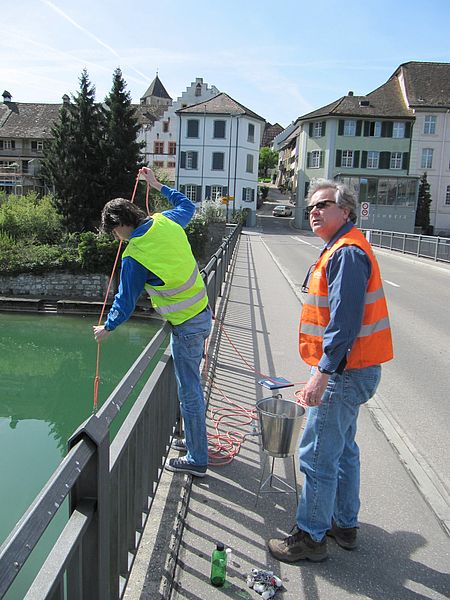The results from a sampling campaign along the Rhine have just been published. Traces of medicines accumulate downstream and often they can be attributed to certain groups within the population.
TU researchers Professor Nick van de Giesen and Dr. Rolf Hut took samples from the Rhine at forty two locations on their way home from a conference in 2011. Corine Houtman from the Water Laboratory determined the concentrations of twenty one common pharmaceuticals they hoped to be able to trace.
As the graph in their article* shows, concentrations tend to increase downstream from Konstanz. This means that the relative increase of pharmaceutical loads is higher than the increase of water discharge. Especially the Sieg, one of the Rhine’s tributaries carries a relatively high load of accumulated drug traces (over two microgrammes per litre).


The problem with these pharmaceutical traces is that water treatment plants cannot remove them from the drinking water. You might think the concentrations are too low to have any effect, but a study from the Swedish ecologist Tomas Brodin (Science, February 15 2013) showed that microtraces of oxazepam (an antianxiety drug) did have biological effects. In his case: on fish, perch to be precise.
Doses as low as two microgrammes per litre made the striped fish more mellow but also more antisocial and vulnerable to predators, the researchers noticed. The concentration in their body tissue was ten times higher then in the environment.
The Rhine researchers recommend monitoring the medicinal footprint of the Rhine because it’s a way to monitor public health without the surveys. “This holds especially true for illicit drugs and over the counter (non-prescribed) pharmaceuticals for which data on sales or usage ure usually unavailable,” the authors explain.
A model that calculates the concentrations as a function of the input (nanogrammes per day and person) and the degradation in the river allowed the researchers to link increases of certain pharmaceuticals to specific groups within the population along the Rhine.
That way they found that elder men are the main clients for anti-epileptics and adult men in general downed most of the antidepressant drug primidone. Interesting. Just as Germans consume more antianxiety drugs (Temazepan) than the French on the other side of the stream.
Sometimes the link between drugs and user group are statistically sound, but hard to explain. How come, for example, that girls cause a larger intake of beta-blockers (a drug that stabilises one’s heart beat). As it is unlikely that the girls themselves take such medication, can it be their (grand) fathers or mothers whose hearts get overstressed?
Thus the results of this first sampling evoke a number of new questions, which is always nice in science. Plus it has shown to provide a new insight in public health and drug consumption (both medicinal or recreational) along the banks of the Rhine.
Recommended: Rolf Hut’s account ‘Pisswasser‘ on his weblog
* Rolf Hut, Nick van de Giesen and Corine J. Houtman, Medicinal footprint of the population of the Rhine basin, Environmental Research Letters, 27 December 2013, available through: stacks.iop.org/ERL/8/044057



Comments are closed.